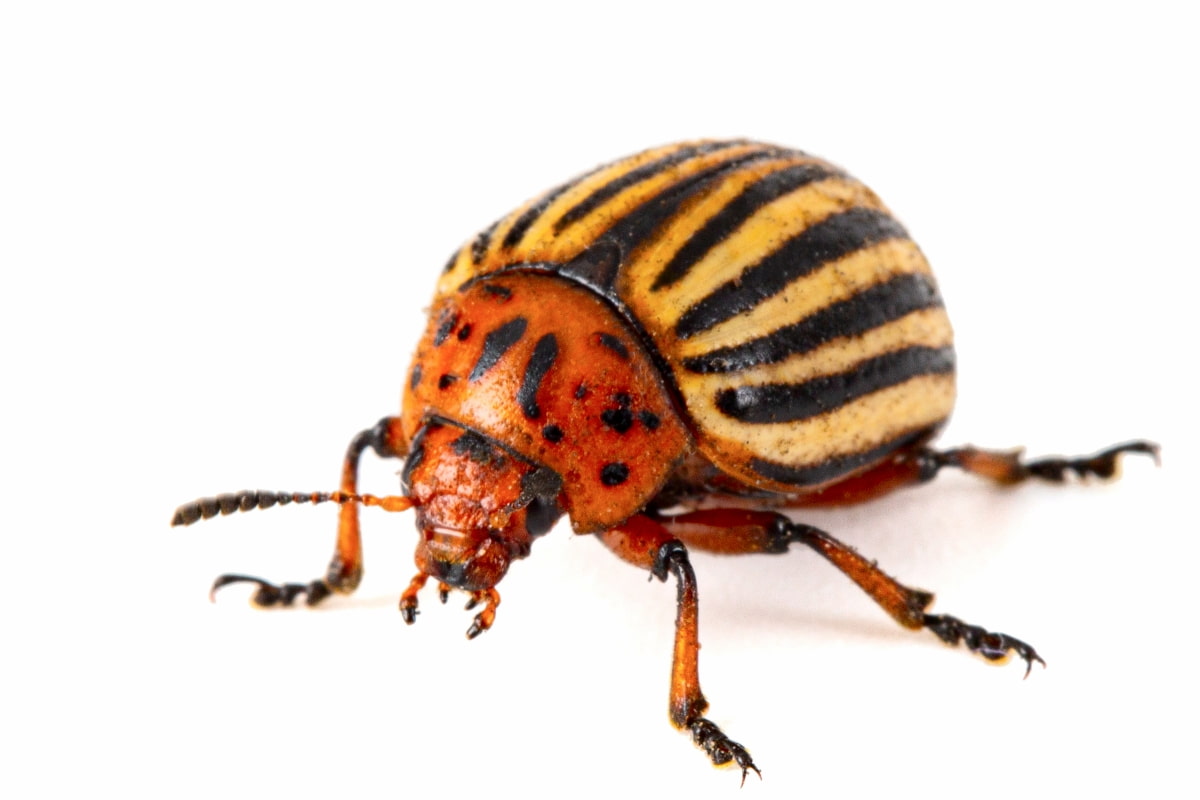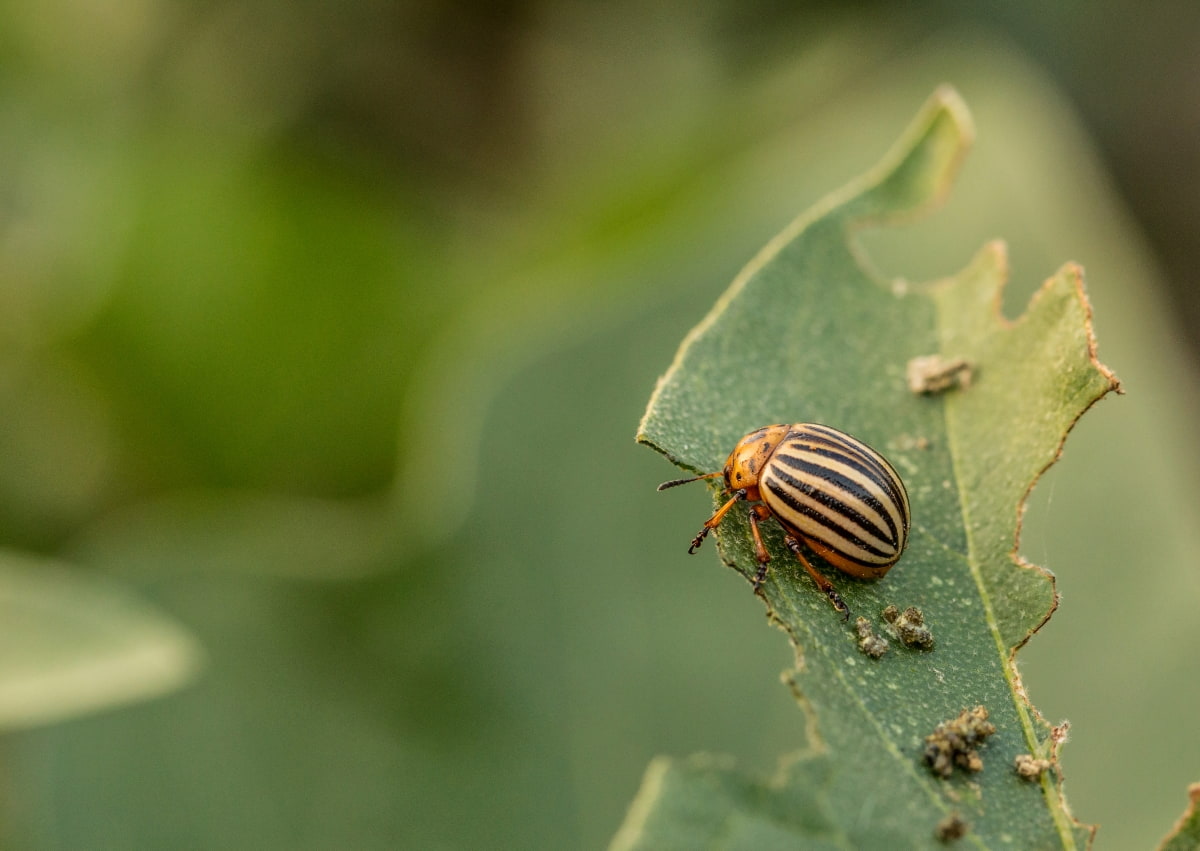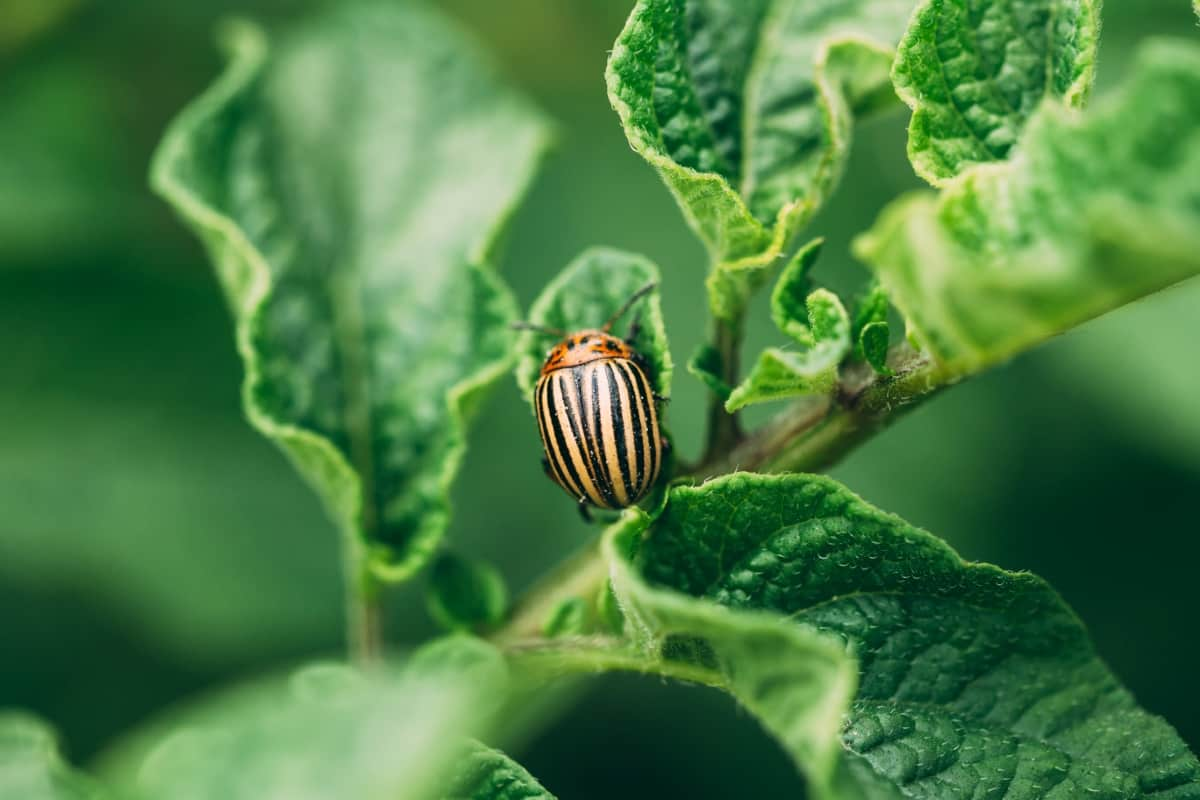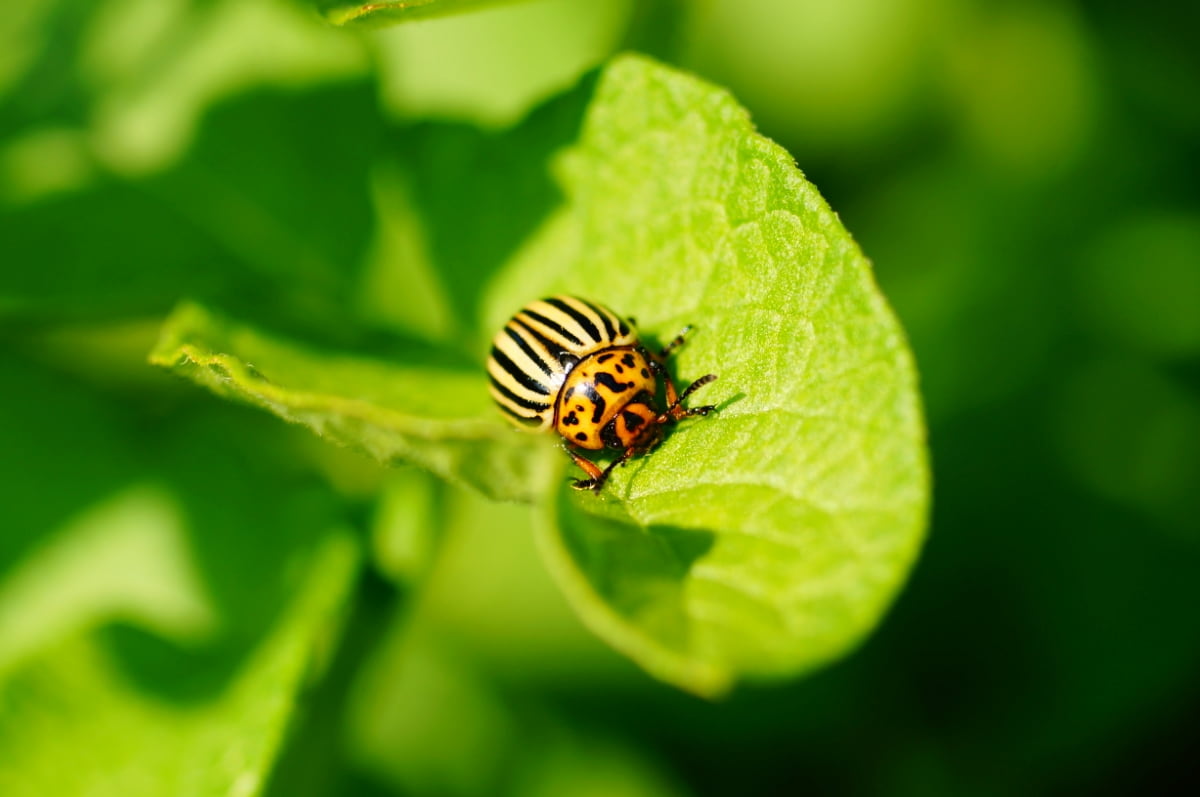Colorado Potato Beetles (Leptinotarsa decemlineata) are notorious agricultural pests, posing a significant threat to potato crops worldwide. Identified by distinctive yellow and black stripes, these beetles target solanaceous plants, with potatoes being their preferred host. Native to North America, they have rapidly spread due to human-assisted transport. Adult beetles and larvae defoliate plants, causing yield loss and economic damage. Their resilience to various pesticides and ability to develop resistance make them challenging to control.

Homemade Remedies for Tackling Colorado Potato Beetles
Understand the Damage Caused by Colorado Potato Beetles
Colorado Potato Beetles (CPB) wreak havoc on potato crops, causing extensive damage and economic losses. Adult beetles and their voracious larvae strip plants of foliage, significantly reducing photosynthesis and stunting growth. This defoliation weakens the plants, leading to decreased tuber development and lower yields. Severe infestations can result in crop failure, threatening food security and the livelihoods of farmers.
CPBs are also known for developing resistance to various insecticides, complicating control efforts. Their ability to rapidly adapt and reproduce further exacerbates the challenge, making these beetles a persistent and destructive menace to potato cultivation, requiring vigilant management strategies for sustainable agriculture.
Best Natural Methods for Controlling Colorado Potato Beetles
Harnessing the power of natural predators is an effective, eco-friendly approach to control Colorado Potato Beetles. Stink bugs (Perillus bioculatus) and lady beetles (Hippodamia convergens) are natural enemies of CPBs, preying on both eggs and larvae. These beneficial insects act as biological control agents, helping to suppress beetle populations.
Introducing and maintaining habitats that attract these predators, such as flowering plants, can enhance their presence in potato fields. This sustainable method not only minimizes the need for chemical interventions but also promotes a balanced ecosystem, contributing to long-term pest management and healthier agricultural practices.
Use Neem Oil as a Homemade Remedy for Colorado Potato Beetles
Neem oil serves as a potent homemade remedy for combating Colorado Potato Beetles (CPBs). With its natural pesticidal properties, neem oil disrupts the beetles’ feeding and reproductive cycles. Mix a solution of neem oil with water and a small amount of dish soap, then spray it on potato plants, ensuring thorough coverage.
The neem oil interferes with the beetles’ ability to feed and lay eggs, effectively reducing their population. Regular application, especially during the growing season, enhances its efficacy. This organic approach provides an environmentally friendly alternative, preserving beneficial insects and fostering sustainable pest management in potato cultivation.
Use Diatomaceous Earth to Combat Colorado Potato Beetles
Diatomaceous Earth (DE) is an excellent natural remedy for controlling Colorado Potato Beetles (CPBs). DE, a powder made from fossilized diatoms, contains microscopic, sharp edges that puncture and dehydrate the exoskeletons of insects upon contact. To use DE against CPBs, lightly dust the potato plants and surrounding soil with the powder.
In case you missed it: How to Deal with Japanese Beetles in Flower and Vegetable Gardens

Focus on areas where the beetles are prevalent. Reapply after rain or irrigation. The abrasive nature of DE is harmless to humans and pets but highly effective against soft-bodied insects like CPBs. This method offers an eco-friendly solution, aiding in the reduction of beetle populations while maintaining a safe, chemical-free environment.
Creating a Garlic Spray for Colorado Potato Beetle Control
To create a homemade garlic spray for Colorado Potato Beetle control, finely chop or crush several garlic cloves and steep in hot water for about 24 hours. Strain the mixture and add a small amount of liquid soap. Dilute the solution with water and transfer it to a spray bottle. Thoroughly coat potato plants, focusing on the undersides of leaves where beetles often lay eggs.
The pungent odor and compounds in garlic act as natural deterrents, disrupting the beetles’ feeding and reproductive activities. Regular application, especially during the growing season, enhances its effectiveness, providing an organic and cost-effective approach to CPB management.
Implement Companion Planting Techniques
Implement companion planting techniques to deter Colorado Potato Beetles naturally. Interplant potatoes with insect-repelling companions like marigolds, which emit a scent that deters beetles. Additionally, planting basil or coriander nearby can provide a natural protective barrier.
Nasturtiums attract predatory insects that feed on beetle eggs and larvae. Rotate crops regularly to disrupt the beetles’ life cycle. Consider planting crops like beans, horseradish, or catnip, which can repel or trap beetles. These companion planting strategies not only contribute to pest control but also foster a diverse and balanced ecosystem, promoting healthier soil and more resilient crops.
Leverage the Power of Beneficial Insects
Harness the power of beneficial insects, such as stink bugs (Perillus bioculatus) and lady beetles, in your battle against Colorado Potato Beetles (CPBs). Stink bugs are voracious predators of CPB eggs and larvae, while lady beetles feast on these pests at various stages of their life cycle.
In case you missed it: How to Control Okra Leaf Beetle Naturally: How to Get Rid of This with Natural and Organic Treatment

Attracting and maintaining populations of these natural enemies can be achieved by planting nectar-rich flowers, such as dill and fennel, to serve as habitats. These beneficial insects act as biological control agents, offering an eco-friendly and sustainable approach to managing CPBs. By fostering a diverse and harmonious ecosystem, you create a self-sustaining defense system that supports natural pest control and promotes crop health.
Apply Homemade Insecticidal Soap for Colorado Potato Beetles
Create a homemade insecticidal soap to combat Colorado Potato Beetles (CPBs) effectively. Mix a solution by combining two tablespoons of liquid soap, preferably castile soap, with 4 liters of water. Ensure the soap is free from additives like fragrances. Fill the solution to a spray bottle and thoroughly coat the potato plants, focusing on the undersides of leaves where CPBs often reside.
The soap disrupts the beetles’ cell membranes, causing dehydration and eventual death. Regular application, particularly during the growing season or when CPB populations surge, enhances the efficacy of this organic solution. This method provides an environmentally friendly alternative to chemical insecticides, preserving the health of your potato crop and the surrounding ecosystem.
Use Kaolin Clay as a Natural Remedy for Colorado Potato Beetles
Utilize kaolin clay as a natural remedy for Colorado Potato Beetles (CPBs). Create a protective barrier by spraying a mixture of kaolin clay and water onto potato plants coating them evenly. This forms a fine film on the foliage, deterring CPBs from feeding and laying eggs. Kaolin clay works by creating a physical barrier that confuses and irritates the beetles, preventing them from establishing on the plants.
In case you missed it: Flea Beetles Management in Radish: Symptoms, Treatment, Chemical, Biological, Natural, and Organic Control

Reapply after rain or heavy irrigation. This method is not only effective in pest control but also contributes to a sustainable, eco-friendly approach, minimizing the need for harsh chemical interventions and promoting the overall health of your potato crop and surrounding environment.
Conclusion
In conclusion, employing homemade remedies presents a sustainable and eco-friendly approach to combat Colorado Potato Beetles. These methods not only effectively manage pests but also contribute to a healthier agricultural ecosystem. By minimizing reliance on chemical interventions, these homemade solutions offer a holistic and environmentally conscious way to protect potato crops from the persistent threat of Colorado Potato Beetles.
- Beneficial Insects in Pest Management
- Natural Solutions for Pest Control in Flower Gardens
- Types of Fungicides Used in Agriculture
- Common Issues in the Fruit Development Stage of Pomegranate Farming
- Fruit Development Issues in Papaya: Easy Solutions and Treatment
- Soil-Borne Diseases and How to Protect Your Plants
- Practices to Prevent Disease Spread in the Garden
- From Wilted to Thriving: How to Treat Root Rot Naturally in Houseplants
- Natural Remedies to Cure Brown Spots on Fig Tree Leaves